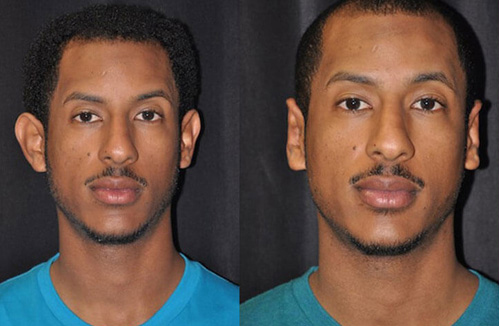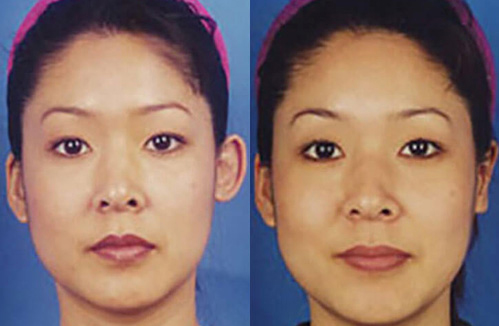Otoplasty


Ear Surgery Overview
Table of Contents
What Is Otoplasty All About?
- Correct the appearance of protruding or prominent ears
- Correct major disparities in the size or shape of a patient’s ears
- Reshape deformed ears
- Repair or reconstruct the ear after traumatic injuries or surgery
- Rebuild an external ear in children who are born with a partially or wholly missing ear
Correcting Ear Deformities
- Protruding Ears
- Cup Ear (top folded down)
- Telephone Ear
- Stahl’s Ear
- Microtia
- Stahl’s Ear
- Microtia
Telephone Ear Deformity
Stahl’s Ear Deformity (Spock’s Ear, Vulcan Ear, Satyr’s Ear, Pointed Ear)
Gauge Earlobe Repair
Torn Earlobes
Shell Ear Or Scaphoid Ear Deformity
Microtia
Otoplasty Procedure
The length of time needed for the procedure depends on the target area. But it typically lasts approximately two hours. More thorough procedures may take longer. In all cases, your ear is easily anesthetized. You need not worry about discomfort during the surgery.
There are four basic steps to an otoplasty procedure:
Step 1 – Anesthesia
Medications are administered for your comfort during the surgical procedure. The choices include local, intravenous sedation, or general anesthesia. Dr. Moelleken will recommend the best option for you.
Step 2 – The Incision
Step 3 – Reshaping
This part of the procedure varies the most. For some, it might consist of minor remodeling of the cartilage. For others, it might be adding or removing large amounts of the ear.
Step 4 – Closing The Incisions
External stitches close the incision. This is different for each patient. But, we always take care not to distort other structures and to avoid an unnatural “pinned back” appearance.
Step 5 – Enjoying Your Results
Otoplasty Recovery and Downtime
After the procedure, Dr. Moelleken thoroughly cleans the ear area. Afterward, he applies an ointment to your ears and puts a protective dressing into place. This dressing protects your wounds, keeps your ears securely in place, and reduces swelling. It can be removed after a few days and replaced with a lighter dressing similar to a headband.
Am I a Candidate for Otoplasty?
Ear surgery is one of the few procedures that are available to almost all ages. Adults and children alike can experience extreme self-consciousness from ear abnormalities. It can be performed at any age after the ears have reached their full size, which is around five to six years of age. Infants might be able to undergo special procedures for remolding the cartilage of the ear.
Younger Candidates
Having ear surgery at a young age is highly desirable in two respects. First, the cartilage is extremely flexible. This permits greater ease of shaping.
Secondly, the child will experience psychological benefits from the improvement. It is usually best to have the surgery before starting school. There is no medical benefit to waiting longer. Waiting might only expose your child to unfair teasing.


Children who are good candidates for ear surgery include those who are:
- Healthy, without illness or untreated chronic ear infections
- Typically five years of age or older, when a child’s ear cartilage is stable enough for correction
- Cooperative and follows instructions well
- Able to communicate their feelings
General Candidates
- Large ears
- Protruding ears
- Lop ears
- Cupped Ear
- Shell ear
- Large or stretched earlobes
- Earlobes with large creases and wrinkles
- Healthy individuals who do not have an illness or medical condition that can impair healing
- Non-smokers
- Individuals with a positive outlook and specific goals in mind for ear surgery
Schedule A Consultation Today
Trust develops in the consulting stages before your surgery. During this time, Dr. Moelleken, Beverly Hills Plastic Surgery, will compassionately listen to all of your concerns. He does not want you to be shy about discussing any of your feelings.


